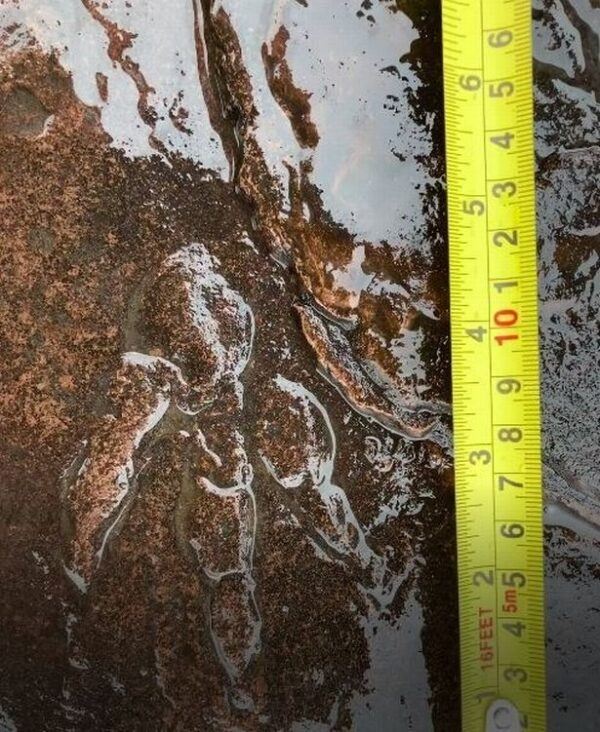A four year-old girl from Wales was on a normal trip to the grocery store with her dad when she found a 215 million year-old dinosaur footprint. Experts with Archaeology Cymru are going so far as to call this “the finest impression of a 215 million-year-old dinosaur print found in Britain in a decade.”
Lily Wilder was walking with her father Richard along the coast between Barry and Sully when she stumbled upon the tiny footprint.
“We weren’t even sure it was real. I was imagining an artist had gone down and scratched it out, but I knew dinosaur footprints had been found along that piece of coast before so I just thought I’d ask some people,” Lily’s mother, Sally, said to WalesOnline. “I found this fossil identification page on Facebook and I posted it on there and people went a bit crazy. It’s all been so exciting, discovering that it’s actually what they thought it was.”
The footprint is very small, as it is just over 10cm long.

Experts have said that this footprint is known as a Grallator, which is a common type of tiny, three-toed print made by a variety of bipedal theropod dinosaurs. The print has since been moved to National Museum Cardiff.
“It’s so perfect and absolutely pristine, it’s a wonderful piece.” said Karl-James Langford, an expert with Archeology Cyrmu. “I would say it’s internationally important and that is why the museum took it straight away. This is how important it is. I would say it’s the best dinosaur footprint found in the UK in the past 10 years.”
National Museum of Wales Palaeontology curator Cindy Howells said that this is the best specimen of its kind to ever be found on this beach.
“This fossilized dinosaur footprint from 220 million years ago is one of the best-preserved examples from anywhere in the UK and will really aid palaeontologists to get a better idea about how these early dinosaurs walked,” Howells said. “Its acquisition by the museum is mainly thanks to Lily and her family who first spotted it.”
Ben Evans from British Institute for Geological Conservation described this as an “amazing specimen.”
“This beach is a site of special scientific interest and while we encourage people to visit and use it responsibly, collection of rocks, minerals and fossils from this site is not permitted,” he said.
COMMENTS POLICY: We have no tolerance for messages of violence, racism, vulgarity, obscenity or other such discourteous behavior. Thank you for contributing to a respectful and useful online dialogue.